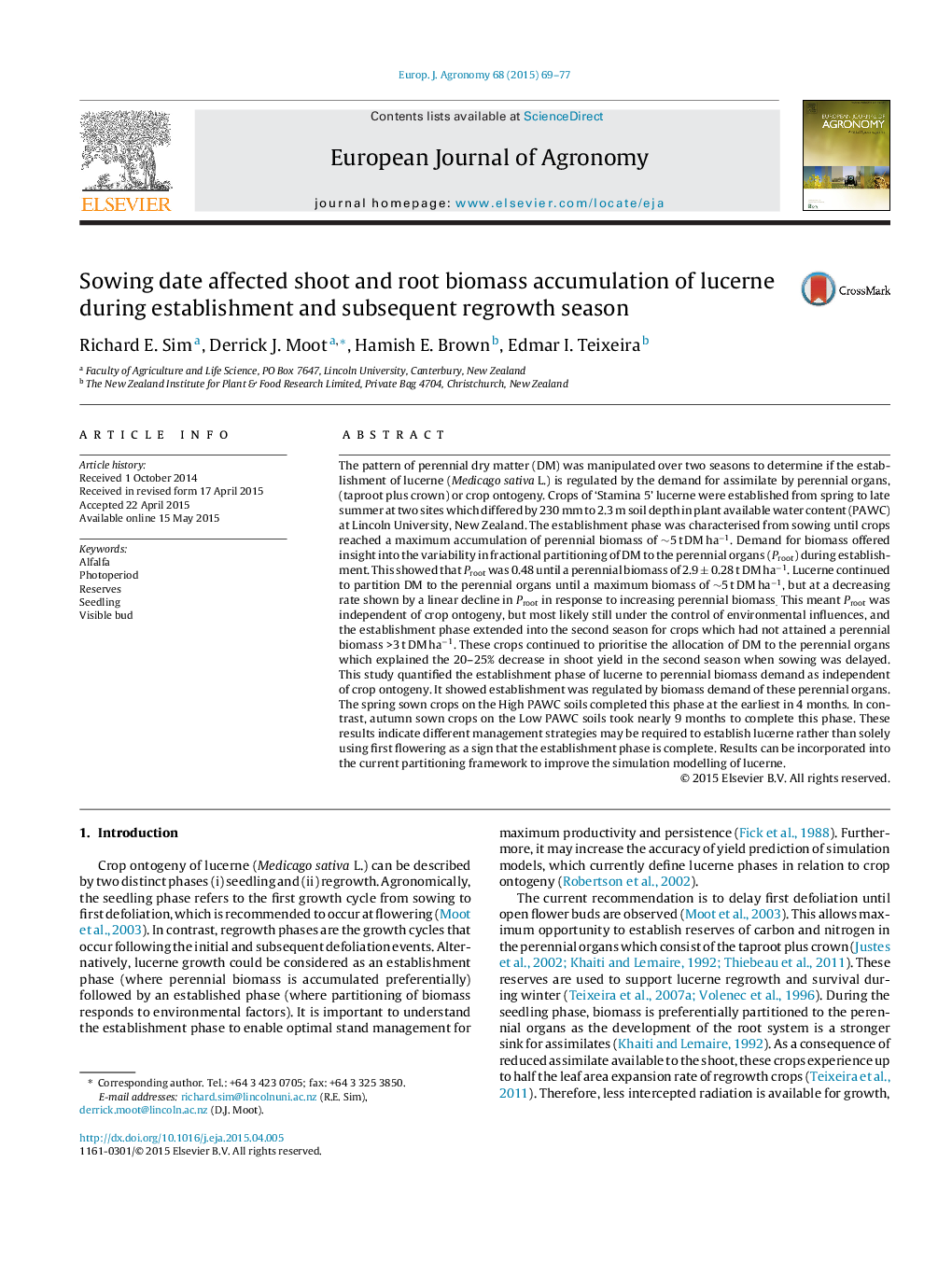| کد مقاله | کد نشریه | سال انتشار | مقاله انگلیسی | نسخه تمام متن |
|---|---|---|---|---|
| 6374272 | 1624457 | 2015 | 9 صفحه PDF | دانلود رایگان |
- The establishment phase for lucerne was characterised from sowing until crops reached a maximum accumulation of perennial biomass of â¼5 t DM haâ1.
- Allocation of biomass was regulated by biomass demand of these perennial organs, independent of crop ontogeny.
The pattern of perennial dry matter (DM) was manipulated over two seasons to determine if the establishment of lucerne (Medicago sativa L.) is regulated by the demand for assimilate by perennial organs, (taproot plus crown) or crop ontogeny. Crops of 'Stamina 5' lucerne were established from spring to late summer at two sites which differed by 230 mm to 2.3 m soil depth in plant available water content (PAWC) at Lincoln University, New Zealand. The establishment phase was characterised from sowing until crops reached a maximum accumulation of perennial biomass of â¼5 t DM haâ1. Demand for biomass offered insight into the variability in fractional partitioning of DM to the perennial organs (Proot) during establishment. This showed that Proot was 0.48 until a perennial biomass of 2.9 ± 0.28 t DM haâ1. Lucerne continued to partition DM to the perennial organs until a maximum biomass of â¼5 t DM haâ1, but at a decreasing rate shown by a linear decline in Proot in response to increasing perennial biomass. This meant Proot was independent of crop ontogeny, but most likely still under the control of environmental influences, and the establishment phase extended into the second season for crops which had not attained a perennial biomass >3 t DM haâ1. These crops continued to prioritise the allocation of DM to the perennial organs which explained the 20-25% decrease in shoot yield in the second season when sowing was delayed. This study quantified the establishment phase of lucerne to perennial biomass demand as independent of crop ontogeny. It showed establishment was regulated by biomass demand of these perennial organs. The spring sown crops on the High PAWC soils completed this phase at the earliest in 4 months. In contrast, autumn sown crops on the Low PAWC soils took nearly 9 months to complete this phase. These results indicate different management strategies may be required to establish lucerne rather than solely using first flowering as a sign that the establishment phase is complete. Results can be incorporated into the current partitioning framework to improve the simulation modelling of lucerne.
Journal: European Journal of Agronomy - Volume 68, August 2015, Pages 69-77
